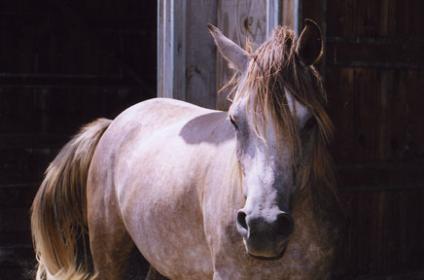This page has a good explanation:
http://www.horse-genetics.com/gray-horses.html
“In some heterozygous horses the mutant gene was deactivated in some regions of their body, so normal pigment production has been able to resume, giving the marks known as “blood marks”. Flea-bitten grey horses develop speckles in the original coat colour, after the greying process has started. This might be due to the same mechanism as blood marking, or “flea-bites” may be controlled by a separate gene, as discussed below.”
"Flea-bitten gray horses develop speckles in the original coat color. For example gray horses born chestnut develop chestnut “flea-bites”. If this speckling starts soon enough the flea-bites can become quite large and numerous, with the horse developing to look a bit like a leopard spot appaloosa.
“Flea-bites” are thought to be controlled by a separate and probably recessive gene, not linked to the gray gene. It is possible that other colors of horse can have the flea-bitten genotype, but the speckles wouldn’t show since they are the same color as the coat!"


